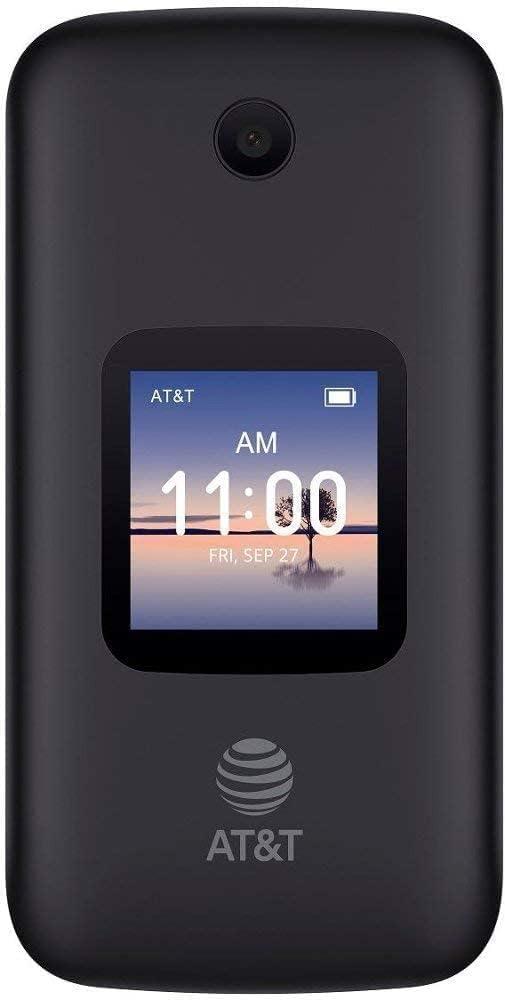We've stumbled upon a surprisingly clever solution for keeping pet safety top of mind-this 9.75" x 6.75" magnetic chart is a game-changer. Imagine a fridge magnet that doubles as an interactive food list,...
Showdown: Senior Phones with SOS & Carrier Compatibility for Emergency Use In an age where smartphones evolve faster than a senior's morning routine, the demand for reliable, user-friendly devices with emergency features has never been stronger. Today's showdown pits six standout models against each other: TCL FLIP 3, Samsung Galaxy Z Flip7, BLU Z5, Nokia 2780 Flip, G3 Pro, and the Alcatel SMARTFLIP 4052R, each promising to merge nostalgia with modern safety. The TCL FLIP 3 shines as a Verizon-unlocked throwback, offering a compact design with an SOS button and straightforward features tailored for simplicity. Its resilient build and long battery life make it a contender for those who prioritize ease of use over tech bells and whistles. The Nokia 2780 Flip, meanwhile, brings a timeless charm with its universally compatible design, ensuring it works seamlessly across all carriers. Its sturdy 2.4" LCD screen and emergency-ready hardware feel like a trusty companion from the past, updated for today's needs. On the other end of the spectrum, the Samsung Galaxy Z Flip7 steps into the spotlight as an AI-powered smartphone with a 512GB storage capacity. While it's unlocked, its sleek, futuristic aesthetic and advanced features like long battery life and a 2025 release date position it as a bridge between rugged reliability and cutting-edge connectivity. The BLU Z5 adds versatility with its dual-SIM GSM functionality and coral hue, appealing to users who want flexibility without sacrificing durability. For those seeking tech-driven extras, the G3 Pro stands out with its talking clock, speed dial, and inline charging station, all wrapped in a gray finish. It's an unlocked gem with a 1300mAh battery and a suite of senior-friendly tools like caller ID and Bluetooth. But not all hope is unlocked: the Alcatel SMARTFLIP 4052R is carrier-locked to AT&T, a potential snag for users wanting more control. Still, its 4G LTE connectivity, big buttons, and nano+SD slot make it a functional choice for everyday use. Ultimately, the decision hinges on priorities-whether you value carrier freedom, advanced tech, or a balance of classic design with modern safety. Each phone here has its niche, but one thing is clear: when emergencies strike, the right device could be the difference between a quick response and a prolonged wait.
Surprising Insight: 12000mAh Emergency Radios for Survival In the unpredictable dance of survival, a reliable lifeline can make all the difference. Enter the realm of emergency radios-high-capacity, multifunctional tools designed to withstand the chaos of emergencies, natural disasters, or remote expeditions. Among the contenders, 12000mAh models stand out, promising extended endurance and versatility. Yet, as you delve deeper, the landscape reveals more than just battery specs: it's a tapestry of innovation, from solar-powered ingenuity to features that blur the line between utility and gadgetry. The Midland ER310 is a classic survivor's ally, with a 12000mAh battery that ensures hours of operation without a plug. Its combination of hand crank, USB, and solar charging is a reminder that preparedness hinges on adaptability. Pair this with a NOAA weather scan, an ultrasonic dog whistle, and a compact SOS flashlight, and you've got a device that feels like a one-stop shop for distress. But is it truly the ultimate choice? Compare it to the FosPower Model A1, which boasts a 7400mWh power bank-an upgrade for those who need to charge phones or other electronics on the go. While its battery capacity may lag behind the 12000mAh threshold, the integrated power bank turns it into a mobile energy hub. The same multitasking ethos applies to the Emergency Crank Radio with 4000mAh/14800mWh, a model that seems to fuse a standard radio with a sump pump for power storage, offering a curious mix of durability and tech. Then there's the Emergency Weather Radio that leans on a 4000mAh battery, but compensates with a sleek design and a suite of extras: a reading lamp, headphone jack, and even solar charging. It's like a compact library for the storm-weary, blending functionality with a touch of comfort. Meanwhile, the 5000 Emergency Weather Radio (assuming the number refers to a power bank capacity) distinguishes itself with a five-way power system, including a LCD display and cellphone charger. It's a testament to the idea that survival tech isn't just about endurance-it's about connectivity and clarity. Lastly, the 44400mWh/12000mAh Emergency Radio (perhaps a typographical hiccup, but let's play along) flaunts dual power capacities, with two solar panels ensuring that even in the gloom, energy isn't a luxury. It's the ultimate overachiever, packing a flashlight, compass, and a siren-like SOS alarm into a design that feels both rugged and futuristic. So, what do these models say about our evolving needs? The 12000mAh standard is still king for prolonged power, but as technology advances, the boundary between emergency gear and lifestyle accessory blurs. Whether you're a trekker seeking a day's worth of charging or a homeowner preparing for grid failures, these devices offer more than just survival-they present a curated experience. The next time you're shopping, ask: how many ways do you need to stay connected, and what kind of power will your situation demand? The answer might be more profound than you imagined.



